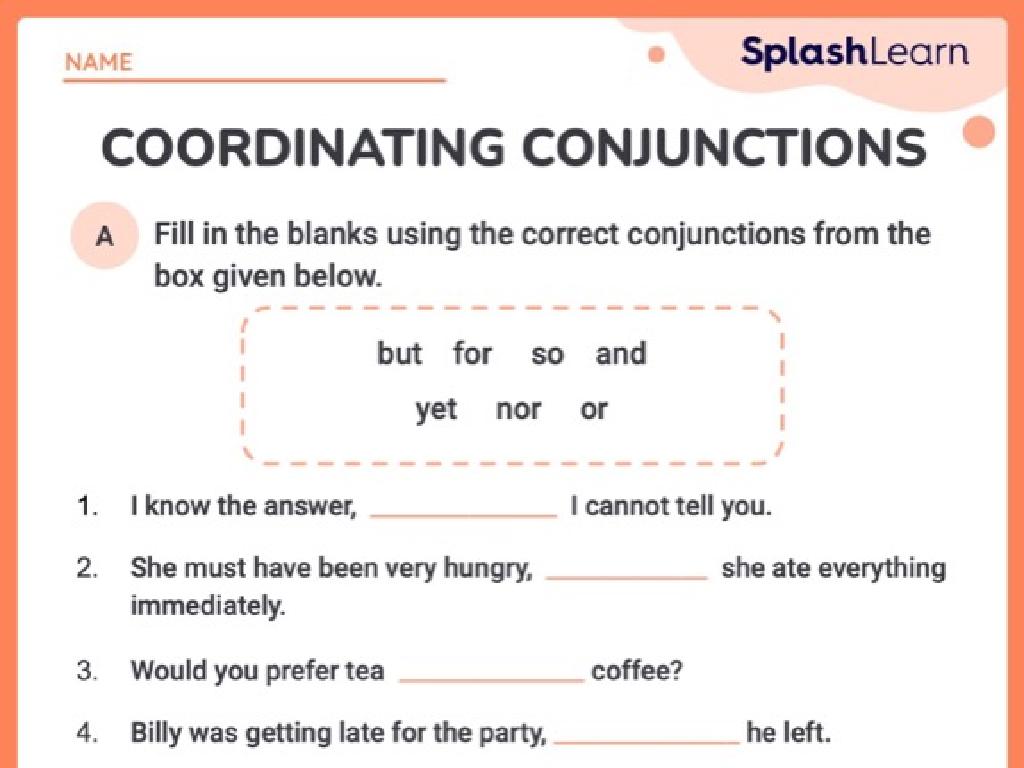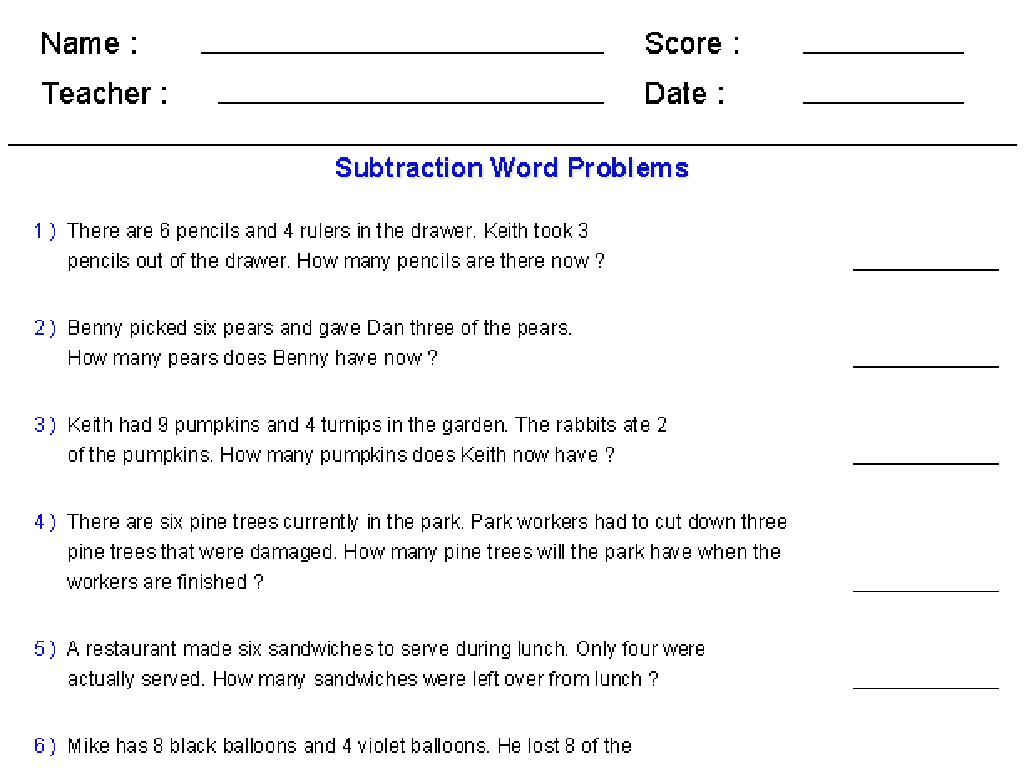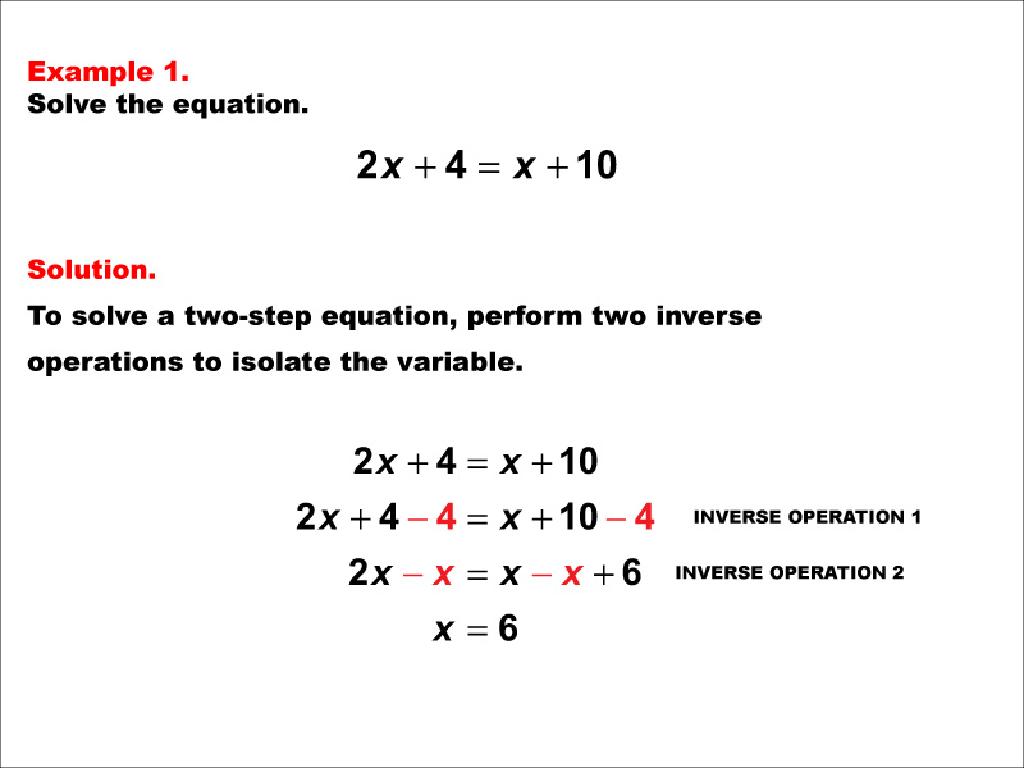Read Drama
Subject: Language arts
Grade: Fourth grade
Topic: Literary Texts: Level 2
Please LOG IN to download the presentation. Access is available to registered users only.
View More Content
Introduction to Drama
– What is drama?
– Drama is a unique form of storytelling through performances.
– Drama in plays and performances
– Plays show drama with actors, dialogue, and stage action.
– Drama’s role in storytelling
– It transforms written tales into vivid, live experiences.
– Engaging with live stories
|
This slide introduces students to the concept of drama as a literary form and performance art. Begin by defining drama as a way of telling stories through acting and dialogue, typically performed in a theater. Explain how plays are the written scripts for these performances and how actors bring the characters to life on stage. Discuss the elements of drama, such as scripts, sets, and costumes, that contribute to the overall storytelling experience. Emphasize the interactive aspect of drama, where audiences can see and sometimes participate in the story as it unfolds live. Encourage students to think about their favorite stories and imagine how they might be dramatized. This will set the foundation for further exploration of dramatic texts and their significance in literature and society.
Exploring the Elements of Drama
– Characters: The heart of the story
– Think of them as your friends in the play
– Setting: The play’s backdrop
– Imagine where your story is happening
– Plot: Sequence of events
– What happens first, next, and last?
– Dialogue: Characters’ conversations
– How characters talk and react to each other
– Stage Directions: Performance guide
– Hidden instructions that tell actors what to do
|
This slide introduces the fundamental elements of drama to fourth-grade students. Characters are the individuals in the play, and students can relate to them as they would to friends or people they know. The setting is the location where the story unfolds, which can be anywhere from a castle to a backyard. The plot is the series of events that take place, and understanding the order is crucial for comprehension. Dialogue is the spoken words between characters, which drives the story forward and reveals personality. Stage directions are the often overlooked but essential instructions that tell actors how to move, speak, and behave on stage. Encourage students to look for these elements while reading a play and to consider how each part contributes to the story as a whole. This understanding will enhance their appreciation and enjoyment of dramatic literature.
Reading a Script: Drama Exploration
– Parts of a script: cast, dialogue, directions
– Cast list names characters, dialogue is what they say, stage directions tell actors what to do
– Reading character lines and cues
– Learn to spot when it’s your turn to speak and what to say
– Practice with expression and emotion
– Use your voice to show feelings, like happiness or sadness, as you read
|
This slide introduces students to the basic components of a script, which is essential for reading and understanding drama. Start by explaining the cast list, which outlines all the characters in the play. Then, discuss dialogue and how it represents the spoken words of the characters. Emphasize the importance of stage directions, which give instructions on how the characters should move or behave. Teach students how to identify their character’s lines and cues, which signal when it’s their turn to speak. Finally, engage the class in a fun activity where they practice reading lines with appropriate expression and emotion to bring the characters to life. Encourage them to think about how their voice can convey different emotions and to experiment with volume, tone, and pace.
Exploring Types of Drama
– Comedy: A humorous play
– Designed to entertain and amuse the audience with jokes and happy endings
– Tragedy: A play with a sad ending
– Focuses on serious content that often ends in sorrow
– Mixed Drama: Combines both elements
– Some plays have both funny moments and sad parts, reflecting real life
– Understanding drama through emotions
|
This slide introduces students to the basic types of drama in literature. Comedy is meant to make us laugh and usually ends happily, while tragedy deals with more serious themes and often ends sadly. It’s important to highlight that some dramas can have elements of both, which can help students understand the complexity of human emotions and storytelling. Encourage students to think of examples from stories or plays they know that fit into these categories. Discuss how these types of drama can evoke different feelings and responses from the audience. This will set the foundation for deeper analysis of dramatic texts.
Exploring Famous Playwrights
– Meet William Shakespeare
– Known for plays like ‘Romeo & Juliet’
– Modern playwrights’ contributions
– Lin-Manuel Miranda created ‘Hamilton’
– Playwrights shaping drama
– They create the scripts for plays and musicals
– Discussing influence on theater
– How stories and characters impact audiences
|
This slide introduces students to the concept of playwrights and their role in creating dramas. Start with William Shakespeare, explaining his timeless influence on drama and literature. Highlight his famous works, such as ‘Romeo & Juliet’ and ‘Hamlet,’ to give students a sense of historical context. Then, transition to contemporary playwrights like Lin-Manuel Miranda, who brought fresh perspectives to modern theater with works like ‘Hamilton.’ Discuss how playwrights craft the dialogue and structure of plays, influencing how stories are told and characters are portrayed on stage. Encourage students to think about how these stories can affect emotions and convey messages, fostering a deeper appreciation for the art of drama.
Vocabulary in Drama: Key Terms
– Learn drama terms: Protagonist, Antagonist
– Protagonist is the main character, Antagonist opposes them
– Understand Monologue, Soliloquy
– Monologue is a long speech by one person, Soliloquy is a character’s thoughts spoken out loud alone on stage
– Use context for new words
– Look at the words around the new term to guess its meaning
– Create a drama glossary
|
This slide introduces students to essential vocabulary in drama, which will help them understand and analyze plays. The protagonist is the central character who drives the story forward, while the antagonist is the character who opposes the protagonist. A monologue is a long speech by a character to other characters, and a soliloquy is a speech where a character speaks their thoughts aloud, usually alone on stage, revealing their inner feelings to the audience. Encourage students to use context clues from the text to infer the meaning of new words. As an activity, students can create their own drama glossary in their notebooks, adding new terms as they learn. This will serve as a valuable reference tool for future reading and discussions.
Analyzing a Scene in Drama
– Break down scene elements
– Identify setting, dialogue, and actions
– Understand character motivations
– Why do characters behave as they do?
– Explore character relationships
– How do characters interact and why?
– Discuss scene’s theme and message
– What is the deeper meaning of the scene?
|
This slide aims to guide students through the process of analyzing a dramatic scene. Start by breaking down the scene into its basic elements: the setting, the dialogue, and the characters’ actions. Discuss how each element contributes to the overall understanding of the scene. Next, delve into character motivations, exploring why characters behave in certain ways and what drives their decisions. Then, examine the relationships between characters, considering how these interactions influence the storyline. Finally, lead a discussion on the theme and message of the scene, encouraging students to think about the underlying messages the author is conveying through the characters and events. This analysis will help students gain a deeper appreciation of drama and improve their critical thinking skills.
Class Activity: Perform a Scene
– Divide into groups and assign roles
– Practice reading and acting
– Read your lines with expression and gestures
– Perform your scene for the class
– Give and receive feedback
– Think about what you liked, and offer kind suggestions
|
This activity is designed to help students understand the dynamics of drama by actively participating in it. Divide the class into small groups, ensuring a mix of reading and acting abilities in each. Assign roles from a short, age-appropriate scene, and give students time to practice. Encourage them to focus on expression and gestures to bring their characters to life. After the performances, facilitate a feedback session where students can share what they enjoyed about each performance and provide constructive feedback. Possible variations of the activity could include having students write their own scenes, using props or costumes, or performing for another class.
Exploring the World of Drama
– Recap of drama elements
– We’ve learned about scripts, characters, and dialogues.
– Drama’s role in literature
– Drama brings stories to life, teaches empathy, and reflects society.
– Encouraging further exploration
– Drama enhances storytelling
– It adds emotion and action to narratives, making them memorable.
|
As we conclude our unit on drama, remind students of the key elements that make up a drama: scripts, characters, dialogues, and stage directions. Discuss why drama is a vital part of literature, highlighting its power to bring stories to life, teach empathy, and reflect societal issues. Encourage students to explore drama by participating in school plays or reading more plays to understand the depth of characters and plot development. Emphasize that drama is not just about reading; it’s about experiencing the story. Encourage them to express themselves through drama and to appreciate its value in both entertainment and education.






